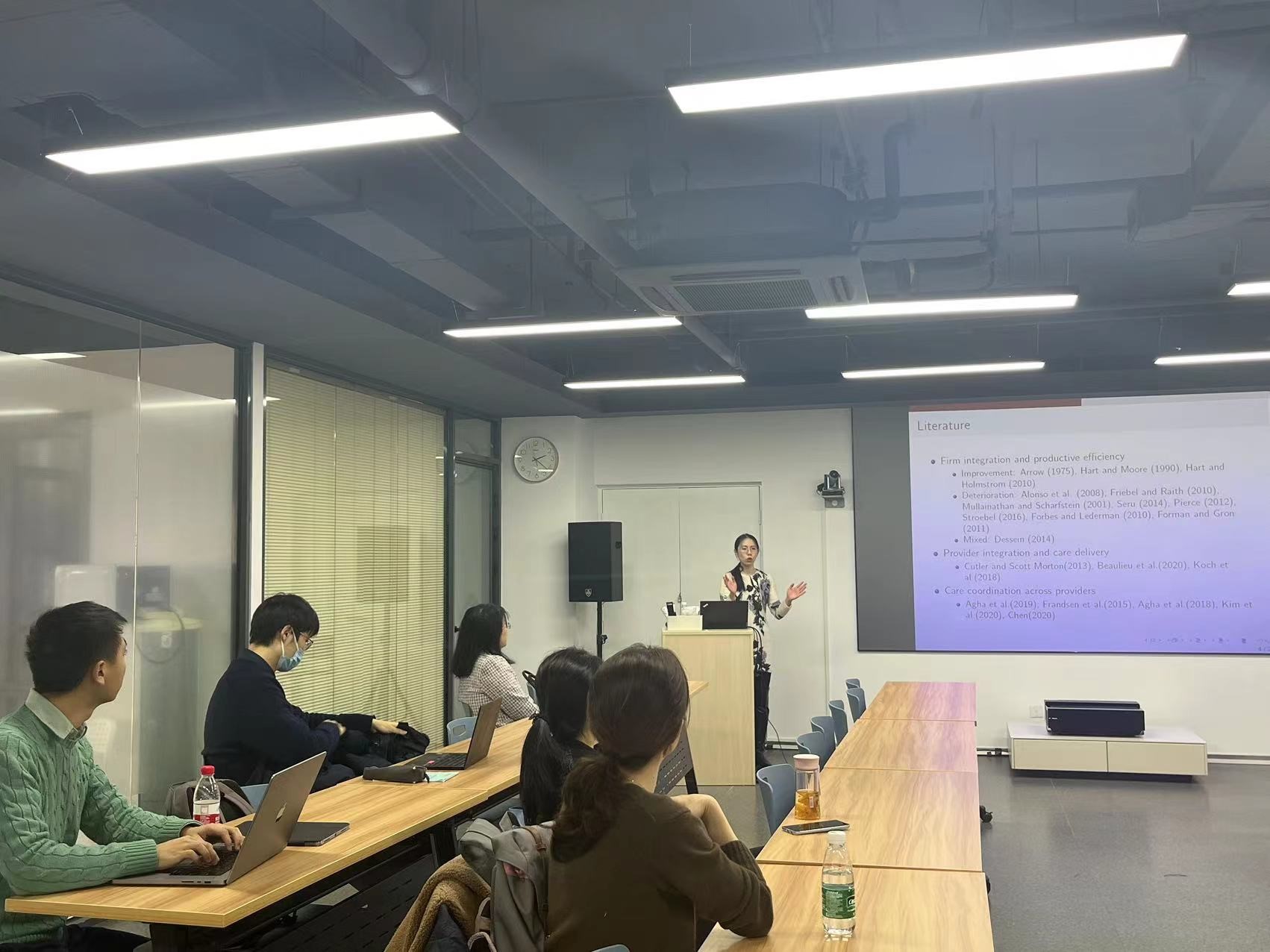On December 18, 2023, Dr. Xiaoxi Zhao, an economist from the RAND Corporation, delivered a lecture titled "The Impact of Organizational Boundaries on Healthcare Coordination and Utilization" at the Institute for Global Health and Development (IGHD) at Peking University. Professor Liu Guoen, the Director of IGHD, chaired the lecture. Faculty and students from IGHD, the School of Economics, and the School of Public Health at Peking University participated in the exchange and discussion.

Dr. Xiaoxi Zhao was a research scholar at the China Center for Health Economics Research (CCHER) at Peking University in 2014. She completed her doctoral studies at Boston University in the United States and earned her Ph.D. in 2015. Her research focuses on market integration, competition's impact on healthcare service prices and quality, and the effects of health insurance payment policies on patients' financial and health outcomes. She employs economic methods to explore the influence of market structure and participant behavior on the market.
Dr. Zhao's lecture was based on a collaborative paper recently published in the AEJ . The study measured the impact of organizational concentration and service boundaries on the efficiency of patients receiving healthcare services in the United States. Dr. Zhao first introduced how to measure organizational concentration and briefly discussed the characteristics of the U.S. healthcare system.
The analysis of the study focused on patients who remained in the same area after their primary care provider (PCP), analogous to the role of a family doctor in China, retired or moved away from the local market. The study found that in areas with higher hospital concentrations, patients had lower utilization rates of medical services. When physicians (healthcare service providers) share organizational relationships, they may have lower barriers to information sharing and higher trust, thereby improving the efficiency of services for patients. For markets lacking or losing PCPs, a one standard deviation increase in concentration in the patient's area led to a 21% decrease in the utilization of medical services. This finding demonstrates that regions with higher hospital concentrations have lower healthcare utilization rates. The pattern suggests that organizational concentration plays a role in explaining regional differences in healthcare expenditure.

(Interpreted by Waverly Shi)